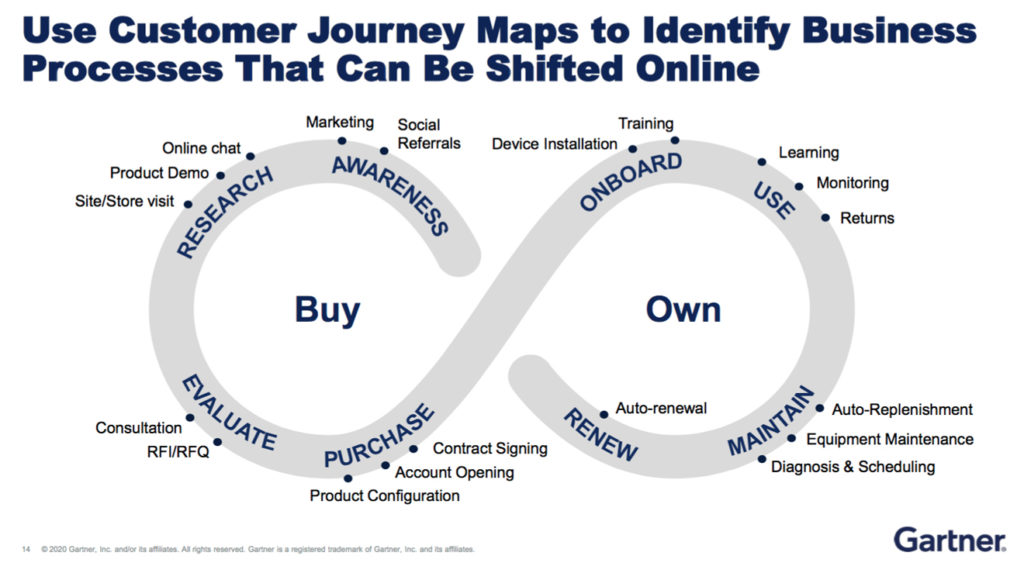In the short term, CIOs and other communication leaders have been hard-pressed to meet organizational demands in response to the coronavirus COVID-19 outbreak. But along with supporting suddenly larger remote workforce with appropriate collaboration and security tools, CIOs should also be looking ahead to a “new normal” after the pandemic recedes.
“We need to this unprecedented situation with immediate actions to increase organizational resilience and plan for long-term growth after this crisis stage of the pandemic,” said Roberta Witty, Gartner VP analyst in a March 25 webinar, Coronavirus Outbreak: CIOs’ Short- and Long-term Actions. “This is a wake-up call for organizations to invest in long-term resilience, as well as day-to-day operational needs,” she said. “It’s also an opportunity for CIOs to demonstrate their leadership and prepare for future growth.”
In the Gartner webinar, Witty pointed to three current challenges: maintaining continuity of operations with a growing number of work-at-home restrictions in the U.S. and other countries; dramatic changes in customer demand, both declines and spikes: and supply chain disruptions.
Short-Term Recommendations
For CIOs, facing these types of short-term challenges, Witty offered the following recommendations:
- Identify use case requirements for at-home workers, such as the need for file sharing or access to enterprise applications.
- Ramp up help desk staffing to answer remote workers’ questions about devices, applications and connectivity.
- Review security arrangements for remote workers who may be using their own devices.
- Address the “last mile” problem to be sure there is enough bandwidth for at-home workers.
- Deploy digital collaboration tools to enable employees to work remotely, putting security controls and network support in place.
- Automate manual processes, such as using AI to help with screening job applications or supporting an at-home sales team with virtual assistants.
- Use customer journey maps to identify business processes that can be shifted online:

- Work with business leaders to conduct workforce planning to assess risk and address staffing gaps.
- Engage customers and partners via digital channels to maintain those relationships.
- See if product offerings can be repackaged and sold through digital channels.
- Establish a single source of truth regarding the changing COVID-19 situation and communicate that to employees.
“Remember that everyone is worried about the future,” Witty said. “It’s more important then ever to build open lines of communication, establish clear expectations and focus on desired outcomes.”
Looking Ahead
Once CIOs can get some breathing room, it’s time to think about the future shape of the organization’s IT infrastructure and requirements. “Many workers will prefer the flexibility and convenience of working at home to coming into an office,” she said. “On the sales and marketing side, your organization may need to find a new balance between traditional and digital business.”
For instance, enterprises can build digital extensions to existing products or use collaborative technology to offer services online rather than face-to-face. On the technology side, that might mean investing in livestreaming, AV conferencing, virtual reality, chatbots and AI, along with security tools. “Data analytics is another key technology for fit enterprises seeking to increase their resilience and support multiple sales channels and employment models,” she added.
Witty’s recommendations for the long term include:
- Develop a digital workplace strategy that includes collaboration applications, security controls, BYOD programs and network support.
- Identify alternative employment mode and digital technologies that can empower employees and automate tasks.
- Develop digital product extensions, expanding to new channels and enabling new business models to increase business resilience and prepare for digital business.
- Evaluate digital technologies to improve employee learning experiences.
- Contribute to data-for-good programs to improve data literacy and increase adoption of a wider range of data and analytics tools.
Finally, Witty reminded CIOs that flexibility and agility are vital to making IT and business investments in a changing economic environment. “Good analytics comes from good data and good people,” she said. “Be sure your people have the skills they need to keep your organization moving forward.”

Like!! I blog frequently and I really thank you for your content. The article has truly peaked my interest.